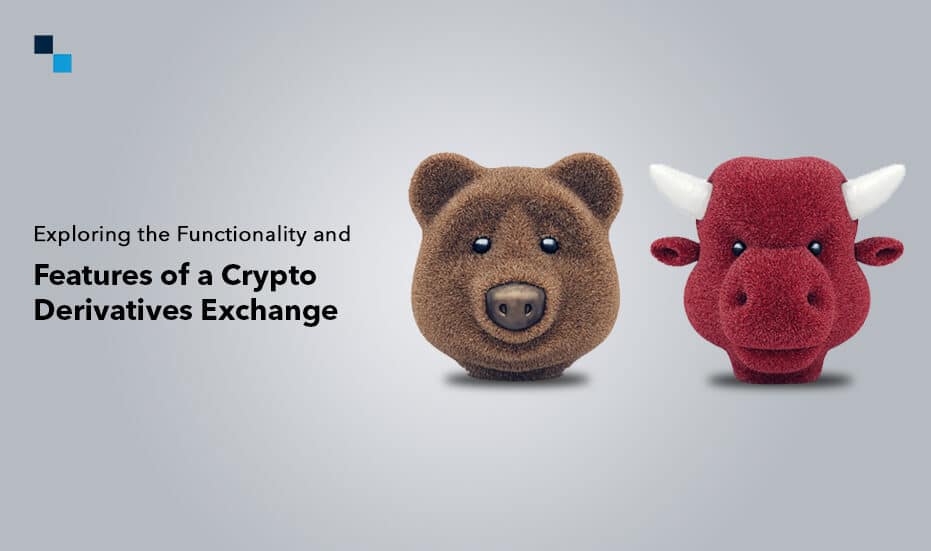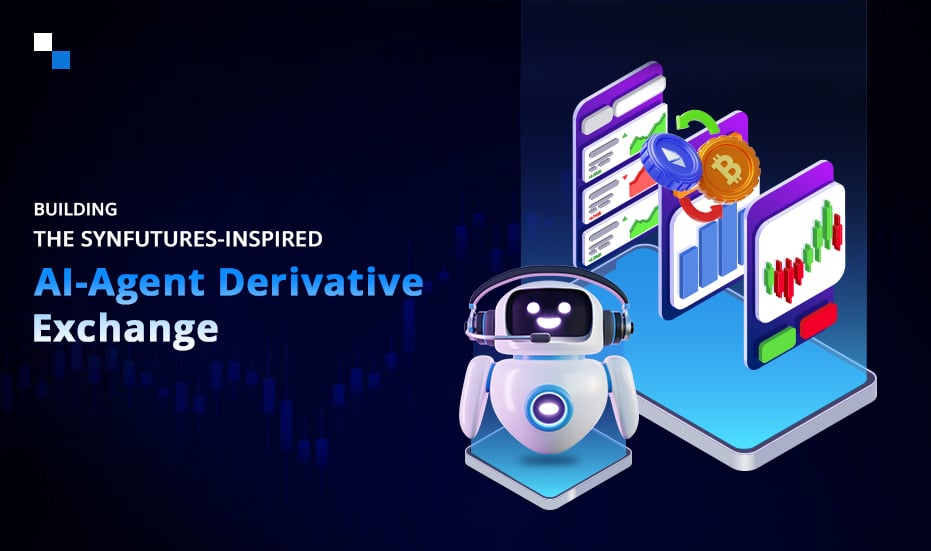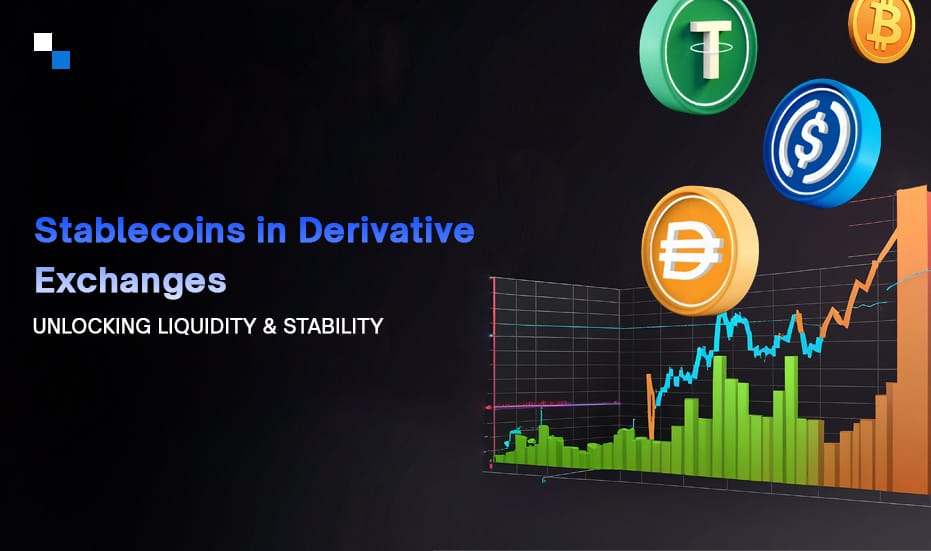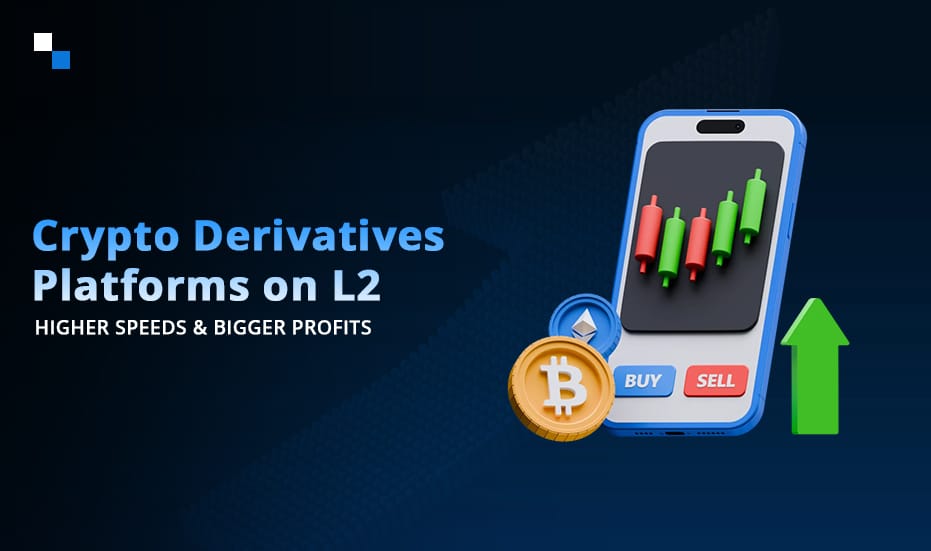Cryptocurrencies continue to disrupt the financial economy as they gain adoption as a medium of exchange and popularity as an investment asset. One of the significant examples of products that have witnessed enormous growth, and continue to grow, is crypto derivatives.
What is a Crypto Derivative?
A crypto derivative is a contract or product whose value is calculated by an underlying asset. In a conventional financial market, a derivative derives its value from assets like fiat currencies, commodities, stocks, interest rates, bonds, and cryptocurrencies.
Crypto derivatives trading is akin to traditional derivatives trading in a way that it involves a buyer and a seller who get into a contract for selling an underlying asset at a predetermined price and time. These derivatives do not have a value of their own but instead count on the value of the asset.
Types of Crypto Derivatives
- Crypto Futures
Futures contracts entail an arrangement between a buyer and a seller for the sale of an asset at a future date, with predetermined terms regarding the specific date and quantity. Although contract details may vary, the fundamental terms are generally standardized.
In crypto derivatives trading, futures represent a popular derivative type frequently utilized by institutional investors. Information derived from futures contracts is commonly employed to forecast future price movements and gauge market sentiment.
Traders involved in futures may experience gains or losses based on subsequent price fluctuations. For instance, if the current Bitcoin price stands at $60,000, an investor might engage in buying or selling futures contracts, anticipating either a decline or an increase in the price.
- Crypto Options
Options represent another category of derivative contracts, allowing traders to buy or sell a specific commodity at a predetermined price on a future date. Unlike futures, options provide the buyer with the flexibility to abstain from purchasing the asset if they choose to do so.
Options are of different types – call options and put options, as well as American and European options. Call options enable a trader to acquire an asset on a specified date, whereas put options grant the trader the right to sell an asset on a predetermined date. Furthermore, American options permit selling before the contract’s expiry, whereas European options necessitate selling precisely on the agreed date.
Options is another popular type of trading in the crypto exchange development world, which is why the market witnesses a growing number of businesses investing in crypto derivatives exchange development.
- Perpetual Contracts
Perpetual contracts, also called perpetual swap or perpetual futures contracts, stand out as a prevalent form of crypto derivative, particularly favored by day traders.
The key difference between perpetual contracts and options or futures lies in the absence of an expiry date for perpetual contracts. Traders can maintain positions for as long as desired, provided they meet holding fees, commonly referred to as the funding rate. Additionally, the account must maintain a minimum balance known as the margin.
Given the typical fluctuations in the prices of underlying assets, the difference between the index price and the perpetual futures contract price tends to be significant. For instance, if the perpetual contract price exceeds the index price, those opting to “go long” on crypto derivatives trading typically pay the funding rate to offset the price difference. Conversely, those opting to “go short” would pay the funding rate to cover the price difference if the perpetual futures contract price is lower than the index price.
The Purpose of Crypto Derivatives
Crypto derivatives play a crucial role in the crypto economy, extending their impact beyond individual traders’ investment portfolios. They are integral to a mature financial system, contributing significantly to the recognition of the cryptocurrency industry as a legitimate asset class.
- Enhancing Liquidity
Liquidity, the ease with which orders can be transacted without influencing asset prices, is a pivotal factor in financial markets. Robust liquidity, characterized by high supply and demand, makes assets more accessible for buyers and sellers. On the contrary, an illiquid market features fewer participants and minimal transactions. Crypto derivatives exchange, such as perpetual contracts, contribute to market liquidity, influencing the ease of opening and closing positions. In liquid markets, risks are typically lower due to a consistent availability of counterparties. This attracts more investors and traders, leading to reduced transaction costs, lesser slippage, and overall favorable market conditions.
- Risk Mitigation
Derivatives serve as a shield against unexpected risks arising from the high volatility of crypto-asset prices. A robust derivatives market attracts professional traders and institutional investors by mitigating the risks associated with a portfolio’s exposure to unpredictable events. Derivatives also serve as risk predictors, especially during uncertain market conditions, where options prices may be overbought. In response to risk-averse sentiments, traders often opt to buy options to safeguard their portfolios. Owing to the risk mitigation feature, businesses see crypto derivatives exchange as a great way to attract users.
- Portfolio Diversification
Derivatives provide traders with opportunities to diversify their investment portfolios, allowing them to venture into multiple crypto assets and master advanced trading strategies such as arbitrage, pairs trading, and short-selling. Advanced trading strategies contribute to increased market liquidity for the underlying crypto asset.
- Optimized Price Discovery
Price discovery, the continuous process of determining the current price of an asset, is a primary function of financial markets. Crypto derivatives optimize price discovery by enabling investors to go long or short, enhancing the efficiency of market adjustments and averting adverse price shocks. This optimized price discovery leads to improved price reliability, instilling confidence in participants that all relevant information has been factored into the asset’s price.
Features of a Crypto Derivatives Exchange
- Stop-Loss and Take Profit
Traders benefit from the ability to set floor and ceiling prices for their trades through stop-loss and take-profit functionalities. This allows for automatic market exits under favorable conditions based on the predefined prices set by the traders.
- Partial Close Orders
The inclusion of partial close orders enables traders to secure partial gains while simultaneously partially closing their orders. This flexibility allows them to continue benefiting from the market’s growth.
- Auto Deleveraging (ADL)
In situations wherein it is not possible to liquidate a position at a price exceeding the bankruptcy level, the Auto Deleveraging (ADL) system within the exchange can de-leverage an opposite position belonging to a specified trader. This proves advantageous, especially when the available insurance is insufficient to cover potential losses incurred on the contract.
- Insurance Funds
To safeguard traders in scenarios where holdings dip below the maintenance level (margin), insurance funds come into play. These funds serve as a protective measure, assisting traders in preserving their funds from potential Auto Deleveraging (ADL) impacts.
Why Antier for Crypto Derivatives Exchange Development?
At Antier, we build enterprise-grade crypto derivatives exchange platforms fortified with market-leading features. Whether you need futures trading, options trading, or perpetual contracts integrated into your exchange, our mission-driven solutions effectively cater to your business use case. Our blockchain engineers emphasize the security and performance of every exchange that we deliver.
Our blockchain experience, expertise, and deep domain knowledge have helped us position ourselves as a trusted and leading crypto derivatives exchange development company.
Connect with our subject matter experts to discuss your business needs.





